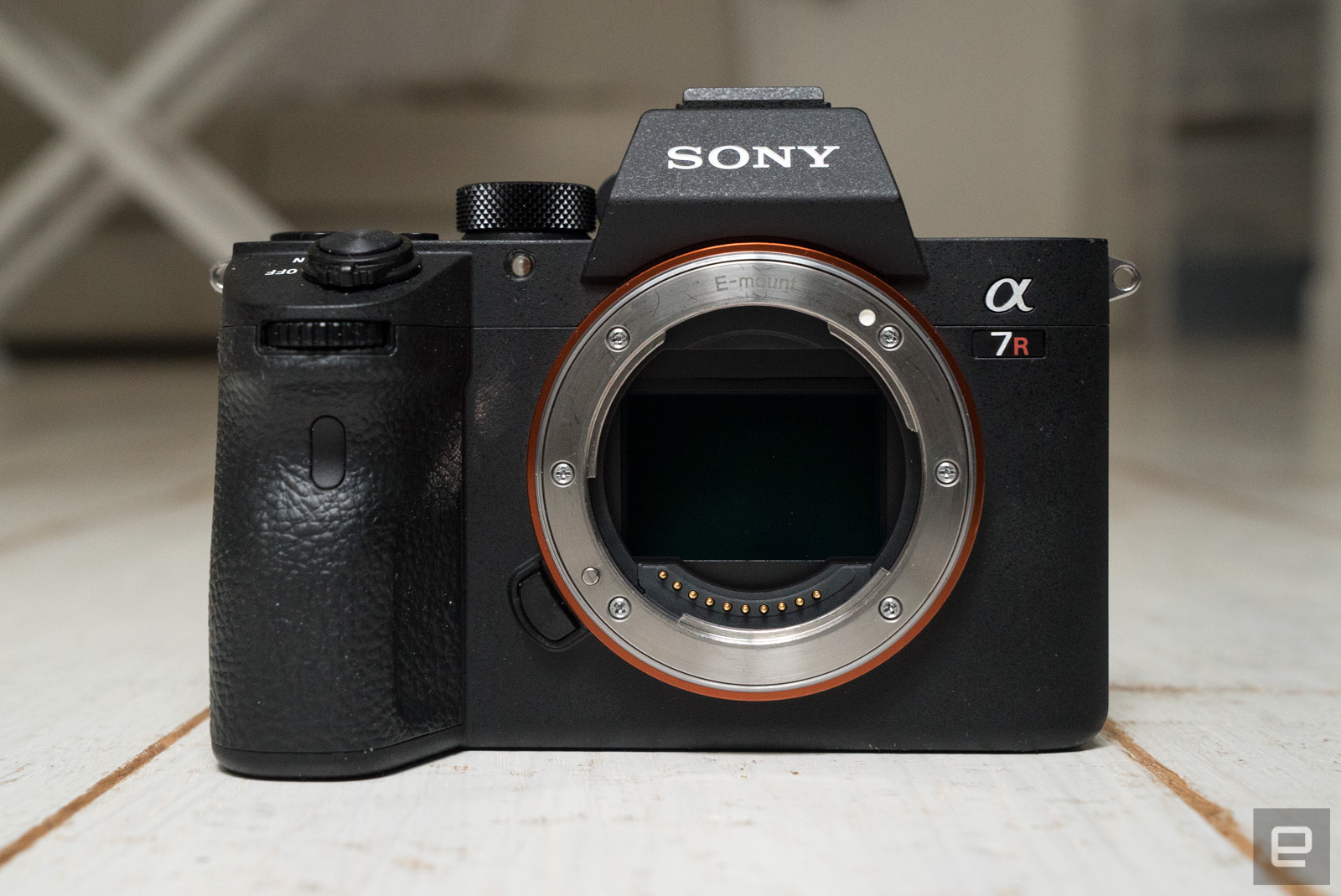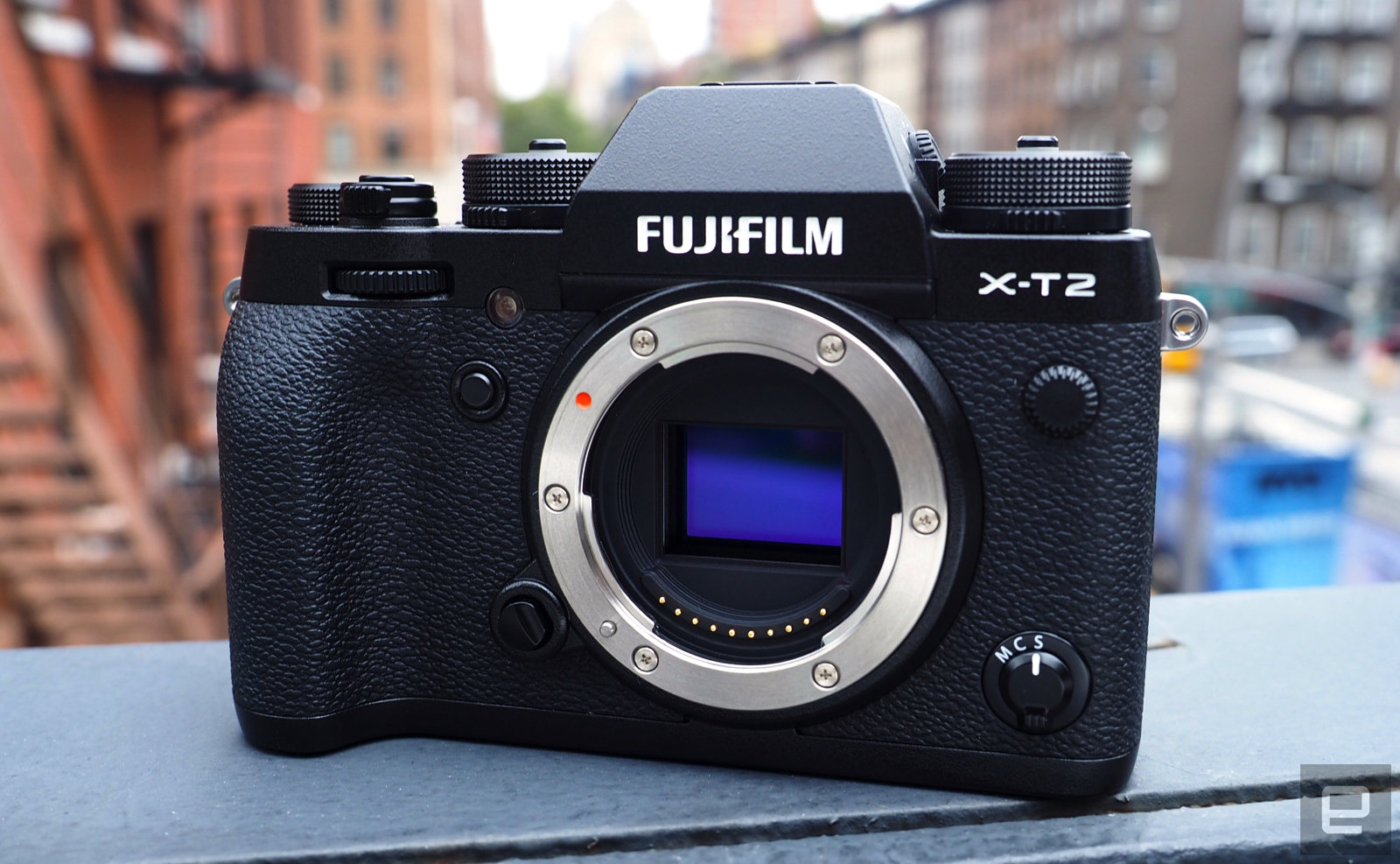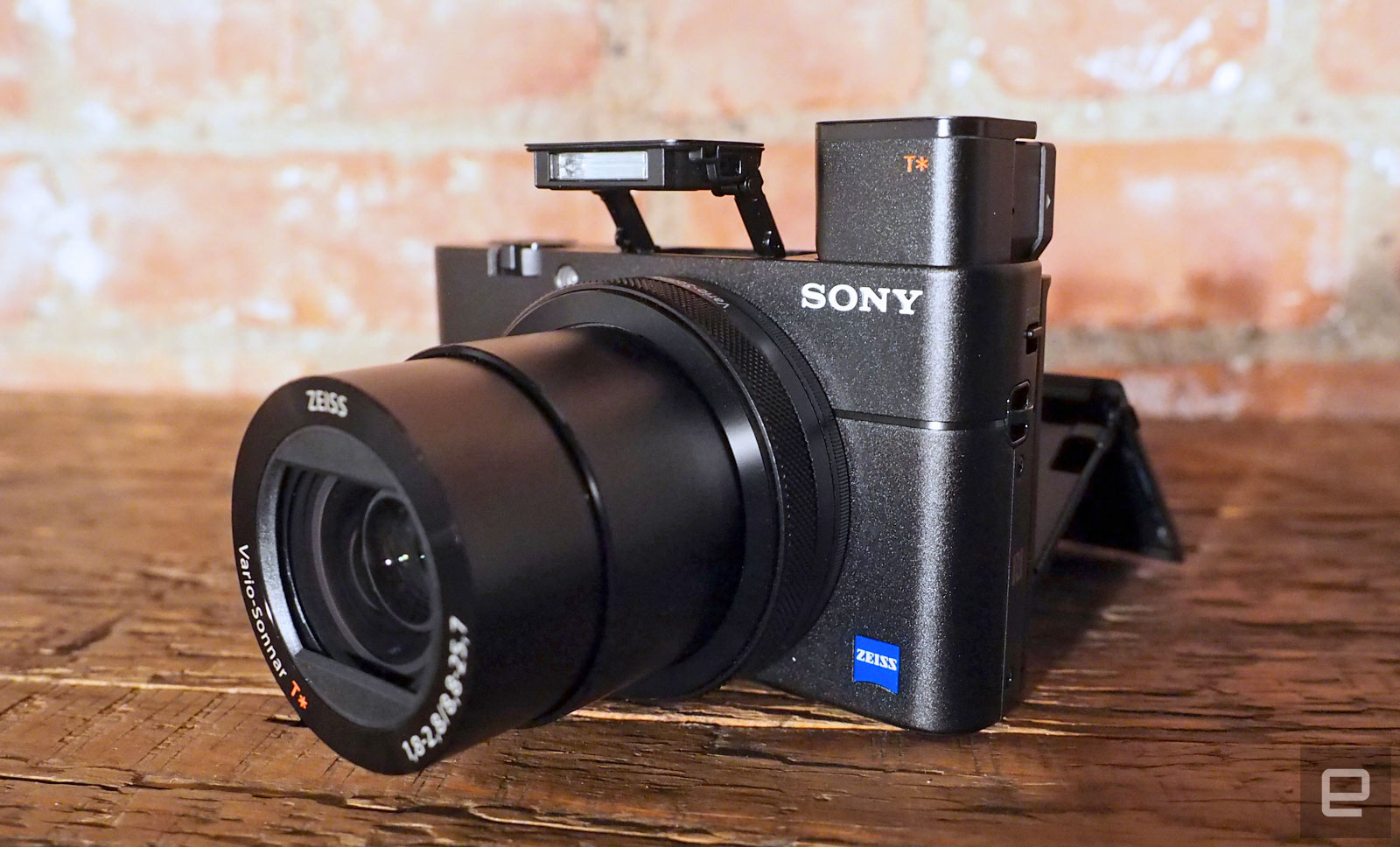
Smartphones have replaced dedicated cameras for most folks, but weirdly, that’s a good thing for photography lovers. With fewer boring point-and-shoots, manufacturers are focusing on building incredible cameras like Sony’s RX100 Mark V compact, the Fujifilm X-T2 mirrorless and Nikon’s high-end, full-frame D850 DSLR. For $500 and up, recent models deliver faster shooting than ever, 4K video, wireless mobile sharing and more.
Performance and features vary wildly beyond that, though, and there are often several excellent choices in the same price range and camera category. Which model to get, then, depends strongly on your budget and what you’re planning to do, whether it be tourism, art photography or student films. I’m here to break down all the features of each model, look at the subtleties and help you ask yourself the right questions.
The basics

DSLRs have a reflex mirror that lets you look directly through the lens at your subject with no electronics in between. When you take a shot, the mirror jumps out of the way to expose the sensor. All of that adds bulk and, for most models, means you can’t see the decisive moment when you take a photo.
At the same time, the mirror allows DSLR makers to put autofocus phase-detect sensors directly into the light path via a secondary mirror. Those measure the distance to your subject before you even take the picture, making autofocus nearly instantaneous. You lose that advantage, however, when you shoot videos or photos in live-view mode with the mirror up.
Mirrorless and compact cameras rely on electronic viewfinders (EVFs) or, in many cases, just a rear display. EVF quality has improved a lot over the past few years but still lacks the clarity of a DSLR’s optical display. Many EVFs also have a touch of lag, so the scene you see may be a few milliseconds behind reality. On the other hand, unlike an optical viewfinder, an EVF shows exactly what the final image will look like.
For autofocus, most mirrorless cameras have contrast-detect autofocus that must hunt for proper focus via a sort of trial-and-error method. (Some modern cameras, like Sony’s A7R III, also have phase-detection AF built directly into the sensor.) That means mirrorless cameras generally have slower AF performance than DSLRs when taking photos. There is no disadvantage, however, in autofocus performance when shooting video.
DSLRs and mirrorless cameras let you change lenses, but you’re stuck with what’s built into a compact camera. While that’s great for portability, a single lens means you’re going to sacrifice something. Fujifilm’s X100F, for instance, has a fast but fixed 35mm-equivalent f/2.0 lens and no zoom. Sony’s RX100 V has a 24-70mm zoom, but it’s slower at the telephoto end (f/2.8) and less sharp than a prime lens.
DSLR vs. mirrorless vs. compact

So should you get a DSLR, mirrorless or high-end compact camera? And do you need a one-inch, Micro Four Thirds, APS-C or full-frame sensor? How many megapixels? What about the low-light sensitivity?
Let’s break these things down with some nice charts. Bear in mind that the points apply in most but not all cases. For instance, recent DSLRs and mirrorless cameras have improved live-view autofocus, vastly closing the AF performance gap.
Sizing up sensors
Think of camera sensors like sports cars but in reverse: The bigger the sensor, the sportier and more expensive the camera. With that extra performance, though, more things can go wrong when you make a mistake.
Full frame is the Lamborghini of sensors, available on pricey cameras like Sony’s A7R III, the Nikon D850 and Canon’s 5D Mark IV. At a size equivalent to 35mm film (36 x 24mm), it offers the best performance in terms of image quality, low-light capability and depth of field. It’s also the most expensive and finicky. While images can look beautiful when you shoot at f/1.4, the depth of field is so razor thin that your subject’s nose might be in focus but not her eyes. This can also make video shooting difficult.
The next size category is APS-C (around 23.5 x 15.6mm for most models and 22.2 x 14.8mm for Canon), offered on most of Fujifilm’s X Series lineup, Sony’s A6500 and the Canon 7D Mark II, among many other models. It’s cheaper than full frame, both for the camera body and lenses, but still brings most of the advantages. You get still get dreamy bokeh, high ISOs for low-light shooting and relatively high resolution. With a sensor size equivalent to 35mm movie film, it’s ideal for shooting video, and focus is less demanding than with full-frame cameras.
Micro Four Thirds (17.3 x 13mm), a format shared by Panasonic and Olympus for all of their mirrorless cameras, is the next step down in sensor size. It offers less bokeh and light-gathering capability than APS-C and full frame, but allows for smaller and lighter cameras and lenses. For video, you can still get reasonably tight depth of field with good prime lenses, but focus is easier to control. If you want a DSLR, none are available with Micro Four Thirds sensors.
The other common sensor size is Type 1 (1 inch). That’s used mostly by compact models like Sony’s RX100 V and the Canon PowerShot G7X II. The smaller size permits a smaller camera body and lens but still offers much better image quality than a smartphone. Most high-end compacts, unlike many DSLRs and mirrorless models, offer 4K video.
It’s worth mentioning that Sony makes the sensors for nearly all other camera manufacturers nowadays, with the exception of Canon and, in some cases, Nikon. Earlier this year, Sony told Imaging Resource in a since-deleted article that it keeps its best technology for itself.
| Full frame | APS-C | Micro Four Thirds | Type 1 |
| Largest consumer size (36 x 24mm) and highest resolution, up to 50 megapixels | Second-largest common size (22.2 x 14.8mm Canon and 23.5 x 15.6mm others), resolution up to 24 megapixels | 17.30 x 13mm sensor size, resolution up to 20 megapixels | 13.20 x 8.80mm sensor size, resolution up to 20 megapixels |
| Largest pixels for dimly lit photos and video with less noise, usable up to ISO 104,200 | Pixels still big enough for low-light photos but more noise than full frame | Not the best for low light, with the exception of purpose-built models like Panasonic’s GH5s | Even the best models like Sony’s RX100 V will be noisy above ISO 6400 |
| Razor-thin depth of field for artistic bokeh | The sweet spot for video but fewer artistic bokeh possibilities than full frame | Decent but not spectacular bokeh | You’ll need to zoom in and use a low f/stop for blurred backgrounds |
| Narrow depth of field creates problems with focus and bright sunlight | Easier to control focus and shoot in bright light | Focus and light more easily controlled | Relatively easy to nail focus, even wide open |
*The above chart does not include medium format (which is larger than full frame) or APS-H (which is larger than APS-C, but smaller than full frame) because they are not common in consumer cameras.
Video

If video is why you’re buying a mirrorless or DSLR camera and decent photos are just a bonus, then your needs change radically. For vlogging, you probably want a selfie-type flip-out rear screen — an item that’s not available on any Sony mirrorless camera but can be found on other models like Canon’s Rebel T7i and the Panasonic GH5.
Here are a few other things you need to ponder. Does your camera line-skip for video recording or read out the whole sensor? Sony’s A7S II and A7R III, for instance, read the whole sensor but only in cropped APS-C mode. The A6500 and the GH5, by contrast, scan the entire sensor and super sample, giving you crisp video with no nasty moire and aliasing artifacts.
Is rolling shutter, or the “jello” effect that can skew video, well controlled? All CMOS cameras have it, but it varies a lot by model. It’s pretty brutal on Sony’s A7S and A7S II, for instance, but much better on the Sony A9 and Panasonic GH5.
Other things to consider: How’s the form factor for video (smaller isn’t necessarily better)? How long can you shoot before the camera heats up or stops? Does it support 10-bit HDR video? Is there a microphone and/or a headphone jack? (if you do a lot of interviews, it’s preferable to have both.) How’s the video autofocus? With its fast, accurate Dual Pixel AF, Canon models like the 7D Mark II and Rebel T7i are the gold standard for vloggers and one-man band shooters, but Sony’s latest models are catching up.
Our top picks
Best cameras if money is no object
Over the past few months, a pretty clear consensus has emerged about the top two cameras on the market: the Sony A7R III and Nikon D850. That’s convenient, because the Nikon is a DSLR and the Sony a mirrorless camera, and each model plays to the strengths of its category. Yet neither model has any real weak spots, and image quality is spectacular on both. Another dark horse is Canon’s 5D Mark IV, but it’s due for a refresh and can no longer keep up with newer rivals.
Sony A7R III
Until recently with Sony’s A7 series, you got to choose the A7S models for low-light capability or resolution with the A7R. The A7R III mirrorless breaks that mold, because with a 42.4-megapixel sensor and 102,400 max ISO, it does both of those things well. It can even go where high-resolution cameras aren’t supposed to, shooting 10fps in bursts and recording 4K video internally with a full (albeit cropped) sensor readout. Autofocus speeds are faster than ever for both video and photos too, thanks to improved contrast-detection AF, on-sensor phase-detection AF, excellent face detection and faster processing. For what you get, the $3,200 asking price is actually reasonable.
Nikon D850

If mirrors are more your thing, Nikon’s $3,300 D850 is the camera du jour. With a 45.7-megapixel sensor and max 102,400 ISO, image quality is on par with Sony’s A7R III. It can also shoot fast, at up to 7fps, which is far from the 14fps of the more professional D5 but, again, incredibly good for such a high-res camera. Nikon has upped its video game as well with the D850 by introducing 4K internal recording. Choosing between the A7R III and D850 is a tough call, but Nikon’s model has better handling and speed for pro photographers while Sony’s takes the prize for video shooters.
Best mirrorless cameras
Sony A7R II, A7S II, A7 II
Sony is currently the only game in town for full-frame mirrorless cameras. If the new A7R III is too rich for your blood, however, Sony still manufactures the high-resolution 42.4-megapixel A7R II and low-light monster 12.4-megapixel A7S II, both priced around $2,500. If that’s still too much, consider the $1,100 24.3-megapixel A7 II, which has built-in five-axis stabilization. All three cameras are great for video, thanks to built-in microphone and headphone inputs, but if you need 4K, you’ll have to spend more — the A7 II is limited to 1080p.
Fujifilm X-T2

If you like your controls manual and your bodies classic, the $1,600 Fujifilm X-T2 already has you sold. But underneath that lovely exterior, there’s much-improved performance over its predecessor, the X-T1, especially for autofocus. With a new 24.3-megapixel X-Trans III CMOS sensor and image processor, you can shoot up to 8fps in burst mode and capture 4K video at 30fps. Compared to its main rival, Sony’s A6500, the X-T2’s better handling gives it an edge for shooting stills while the Sony excels at video.
Sony A6500
Sony’s central theme when it launched the $1,400 Alpha A6500 mirrorless was speed. Thanks to a buffer that’s baked directly onto the sensor, you can focus in five-hundredths of a second and shoot at 11fps for up to 30 seconds, capturing more than 300 shots. And when it comes to video, the A6500 is the APS-C champ, handling 4K at up to 30fps by sampling the entire 6K sensor, making for crisp, artifact-free video.
Panasonic GH5 and GH5s
Video shooters have embraced the GH5 ($2,000) and new GH5s ($2,500). Despite the smaller sensor and reduced bokeh compared to, say, the Sony A7S II, the GH5 is the only mirrorless consumer camera to offer 10-bit, high-data-rate 4K-video recording. That gives you a large amount of control over video in postproduction, letting you tweak the colors to a fine degree. It also allows producers to create HDR videos that are perfect for today’s modern TVs and projectors. You also get both headphone and microphone inputs.
Olympus OM-D E-M10 Mark III
Money is an object for many of us, and that’s where Olympus’ sweet, badly named OM-D E-M10 Mark III comes in. For just $650, you get everything a beginning- to intermediate-level shooter could want, like manual-adjustment dials, a compact size, 2.36-million-dot electronic viewfinder, five-axis in-body stabilization and 4K, 30fps video. The drawback is its Micro Four Thirds 16.1-megapixel sensor that’s both smaller and lower resolution than on rival cameras. Image quality is good, but you’ll get more noise and less-dynamic range in low-light images. Battery life is not the best either.
Best DSLRs
Nikon D810
With the D850 now at the top of Nikon’s DSLR food chain (bar the pro-oriented D5), the full-frame D810 became a lot more interesting. The new model pushed the D810’s price down to around $2,400, but it’s still an ideal portrait and landscape camera, thanks to the 36.3-megapixel filterless design. It’s a lot bulkier than mirrorless models like the Sony A7R II, but many photographers find that gives it better stability, toughness and handling. For video, you’ll want to look elsewhere if you need 4K, as the D810 is limited to 1080p. Not that If you want to spend a bit less and get most of the D810’s features, the $1,850 D750 is also a decent option.
Canon EOS Rebel T7i

Nikon and Canon both offer numerous APS-C sensor DSLRs, but the best value of the bunch might be the Rebel T7i, launched last year. For $750, you get a 24.2-megapixel, 45-point autofocus sensor that shoots at 6fps with better low-light capability (up to 25,600 ISO) than before. It has NFC, WiFi and Bluetooth capability for quick sharing and a less fiddly user interface. Drawbacks? As with other DSLRs, there’s a frustrating lack of support for 4K video.
Nikon D3400
The fact that you can find Nikon’s D3400 with no fewer than two kit zooms for less than $600 makes it one of the true bargains out there. The 24.2-megapixel sensor delivers great image quality, and performance is decent, thanks to the 11-point autofocus system and 5fps continuous shooting. Bonus features include a detailed Guide Mode and Nikon’s SnapBridge Bluetooth for easy file sharing. On the downside, that screen isn’t a touchscreen, and video resolution is limited to 1080p.
Compact cameras
Fujifilm X100F
For travel photographers who want the best pocketable camera at a reasonable price, there’s Fujifilm’s $1,300 X100F. The fixed 23mm f/2.0 lens is a hard sell, but like any prime, it offers better quality than a zoom. Apart from that, you get everything you could want in a compact, like 8fps burst shooting, a hybrid optical/EVF and the 24.3-megapixel X-Trans sensor seen in the X-Pro2 and X-T2. It also features easy-to-use manual dials and squeezes all of that into an elegant, tiny package.
Sony RX100 Mark V

Sony’s flagship compact has such a high level of impressive technology that it’s worth every penny of its admittedly high $1,000 asking price. You get a fast 24-70mm equivalent f/2.8-2.8 lens, a 2.36-million-dot OLED EVF, optical image stabilization and a 20.1-megapixel sensor. The standout feature, however, is the speed: You can shoot 24 RAW images per second for 150 shots and focus on your subject in just .05 seconds. As with other Sony cameras, the RX100 V’s Achilles’ heel is its handling; you’ll have to contend with a wonky menu system and a limited selection of manual controls.
Panasonic Lumix TZ100/ZS100
If you’re looking for a superzoom and don’t want to spend an insane $1,700 on Sony’s RX10 IV, take a look at the Panasonic Lumix ZS100. For about $1,000 less ($700), you get an EVF, 1-inch sensor, f/2.8-5.9 and 25-250mm equivalent zoom, five-axis optical stabilization, 10fps continuous shooting and 4K video at 30fps. Sure, the zoom range and shooting speeds aren’t as impressive as Sony’s RX10 IV, but almost nobody needs those features and the ZS100 is less than half of its weight and size.
Wrap-up
There’s never been a better time to buy a camera, as new DSLR, mirrorless and compact models can handle just about everything you throw at them. At the same time, cameras are among the most technologically complicated devices you can get and can cost thousands of dollars, so making the right decision is crucial. The key is to decide what you want to do with one and find the model with the features that best fit. Once you’ve narrowed it down, head to a camera store so you can find the one that feels the best in your hands.
Update: The article originally stated that the Nikon D3400 has a flip-out rear screen, but it’s actually fixed. We’ve updated it with the correct information.
Update 2: This article originally stated that the G7X II was made by Panasonic instead of Canon. We have also updated language regarding sensor size and resolution for clarity and added a clarifying footnote to the table comparing sensor sizes. We also removed a reference to Minolta which no longer manufactures cameras.
source:-engadget







